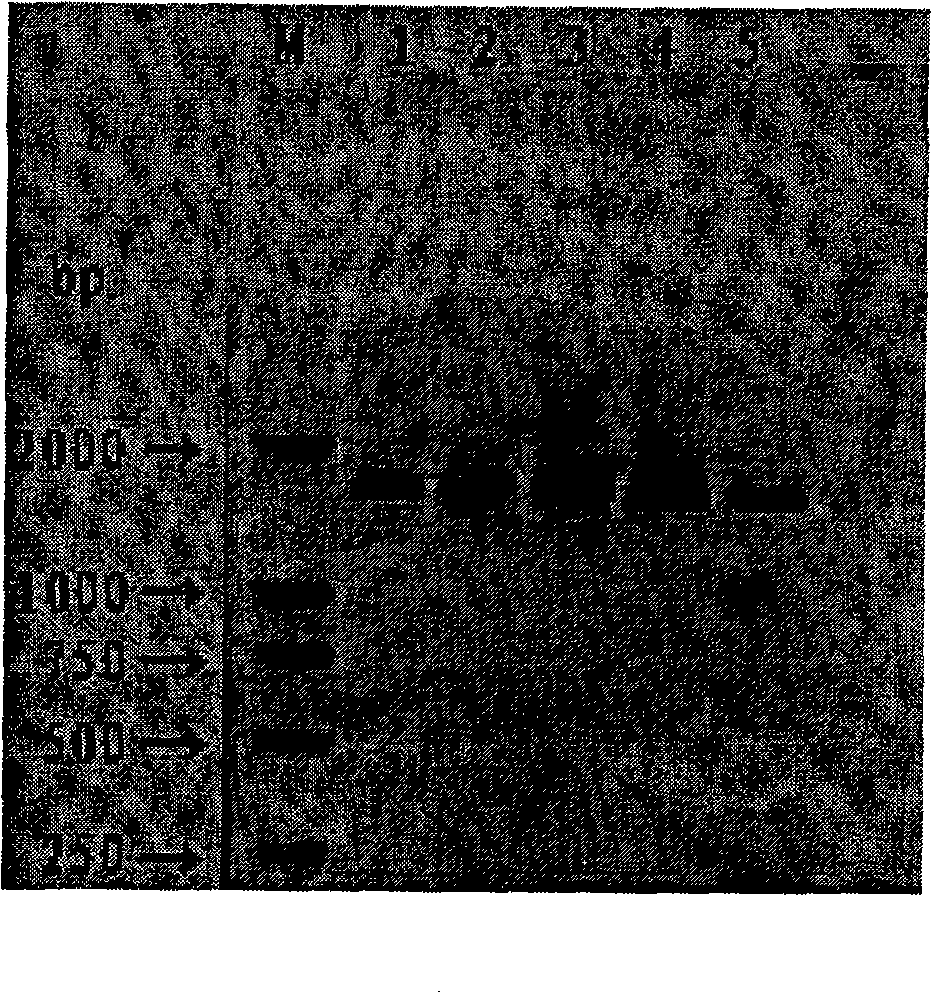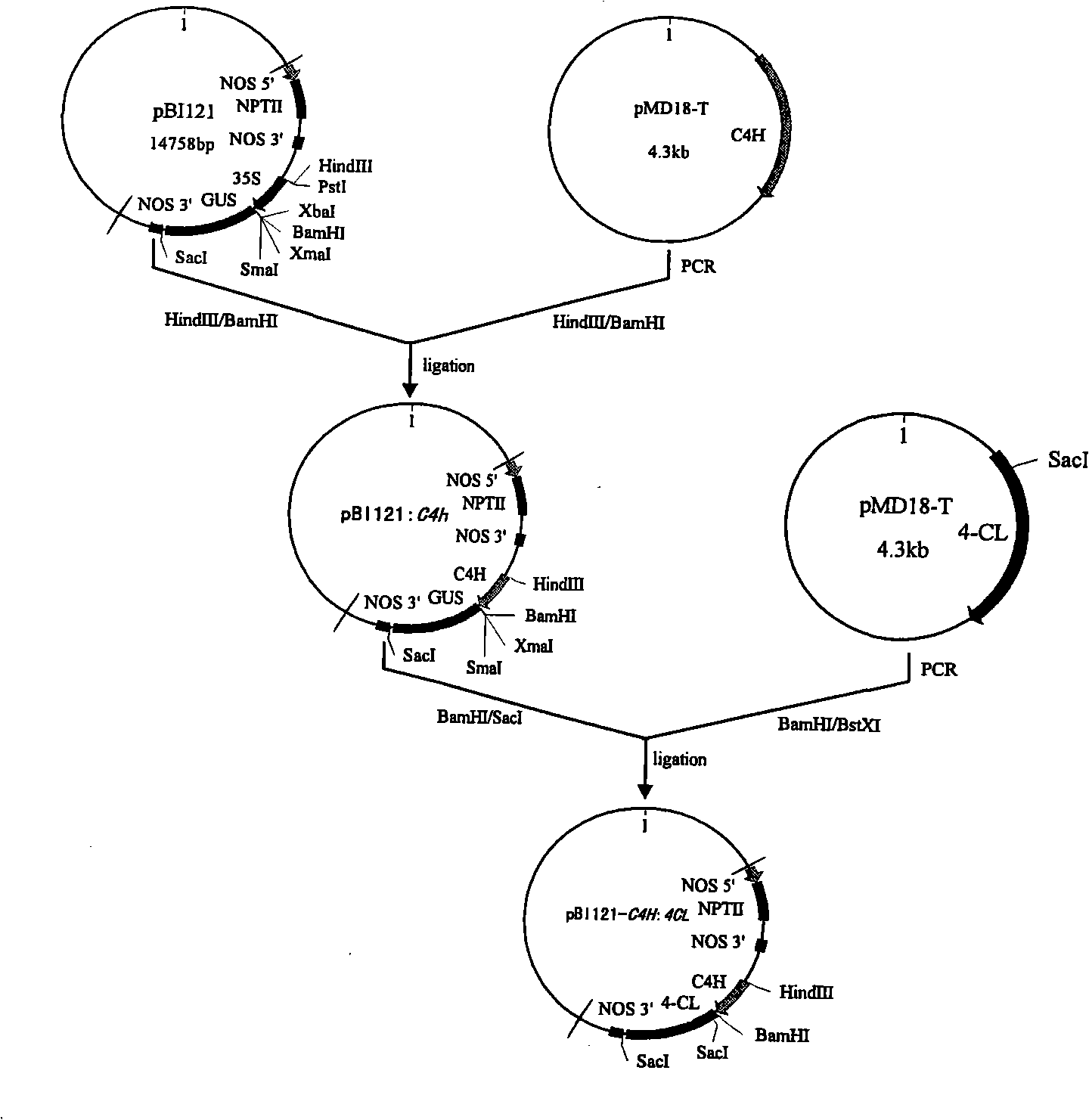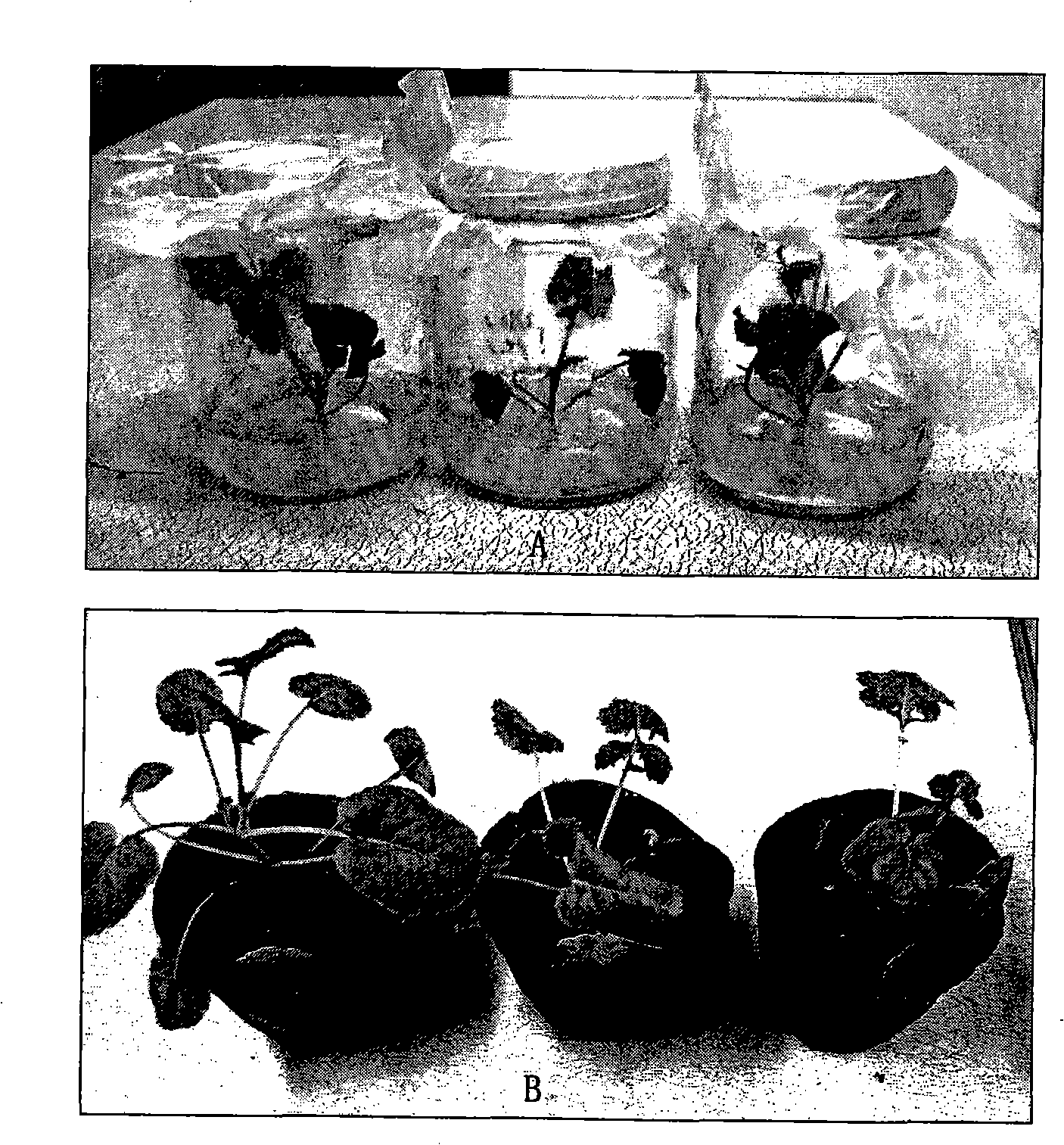Gene 4-CL for Chinese white poplar lignose monomer synthesis and application thereof
A technology for synthesizing genes and poplar tomentosa, applied in the field of molecular biology
- Summary
- Abstract
- Description
- Claims
- Application Information
AI Technical Summary
Problems solved by technology
Method used
Image
Examples
Embodiment 1
[0035] Embodiment 1 (cloning and sequencing of genes)
[0036] Retrieve the published poplar 4-CL gene sequence in the NCBI database, and use the Oligo6.0 software (purchased through commercial channels, the same below) to design primers on both sides of the gene coding sequence (forward primer: [5'-ATGAATCCACAAGAAGAATTCATC -3']; reverse primer: [5'-TTATATGCCTGCCAACTTTTCTTTCAG-3']), used to amplify the corresponding sequence of 4-CL from Populus tomentosa.
[0037] 1. Extract Populus tomentosa mRNA.
[0038] Extraction of RNA (TRIZOL TM Kit for RNA extraction)
[0039] Liquid nitrogen was used to triturate 100 mg of material.
[0040] A. Add 1ml TRIZOL and place at room temperature (20-25°C, the same below) for 5min.
[0041] B. Add 200ul chloroform, shake vigorously for 30s, and place at room temperature for 2min.
[0042] C.12000g, 15min, 4 degrees Celsius. Take the supernatant to a new tube, add 500ul of isopropanol, mix well and place at room temperature for 15min.
...
Embodiment 2
[0048] Embodiment 2 (vector construction)
[0049] Use PCR reaction to introduce HindIII and BamHI restriction site sequences at the 5' end and 3' end of the C4H promoter, respectively, and then use HindIII / BamHI to double-enzyme digest the C4H promoter PCR product and PBI121 plasmid respectively, and digest the PCR fragment and plasmid After enzyme digestion and ligation of large fragments, transform into competent cells DH5α (obtained from commercial sources) for amplification, and then introduce the 4-CL fragment into the vector (PBI121) and replace the original GUS sequence in the vector (PBI121), The 35S promoter sequence in the vector is replaced by the C4H promoter sequence (such as figure 2 shown), and its insert was identified by DNA sequencing.
Embodiment 3
[0050] Embodiment 3 (transformation and screening of plant)
[0051] Transformation of Rapeseed with Agrobacterium LBA4404
[0052] A. Preparation of sterile seedlings: Seeds are treated with 70% ethanol for 1min, mercuric chloride (HgCl 2 ) Soak for 13-15min, ddH 2 After O washing 5 times, spread in MS medium (PH 5.8), agar concentration 0.8%. Rapeseed aseptic seedlings for use.
[0053] B. Rapeseed petiole transformation: Inoculate Agrobacterium tumefaciens LBA4404 (containing 4-CL gene) on solid medium LB, pick a single colony in 50ml YEP liquid medium two days later (tryptone 10g+yeast extract 10g+NaCl5g+ MgSO 4 0.5g). Take 4-5 day old sterile seedling petioles, soak in the bacterial solution for 5-8 minutes, shake gently during this period, then pour out the bacterial solution, and absorb the residual bacterial solution on the explants with sterile filter paper. Placed in co-culture medium (MS+0.2mg / L 6-benzyl adenine (6-BA)+1mg / L 2,4-dichlorophenoxyacetic acid (2,...
PUM
 Login to View More
Login to View More Abstract
Description
Claims
Application Information
 Login to View More
Login to View More - Generate Ideas
- Intellectual Property
- Life Sciences
- Materials
- Tech Scout
- Unparalleled Data Quality
- Higher Quality Content
- 60% Fewer Hallucinations
Browse by: Latest US Patents, China's latest patents, Technical Efficacy Thesaurus, Application Domain, Technology Topic, Popular Technical Reports.
© 2025 PatSnap. All rights reserved.Legal|Privacy policy|Modern Slavery Act Transparency Statement|Sitemap|About US| Contact US: help@patsnap.com



